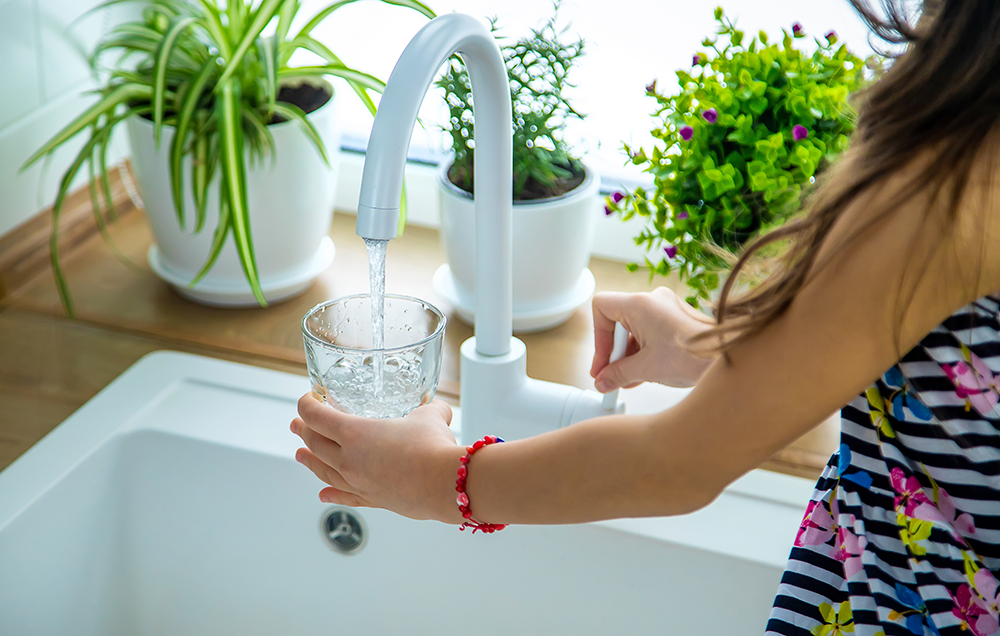Select Your Country/Region
Current Region:
 USA (EN)
USA (EN)
Choose a different country or region to see the content specific to your location
Yes, in the United States, most tap water is treated with chlorine.
This helps make it safe to drink and stops the spread of waterborne diseases. Chlorination is one of the most common methods used by municipal water systems to disinfect drinking water and ensure public health.
The World Health Organization (WHO) suggests keeping chlorine levels in drinking water between 0.2 and 0.5 mg/L. This ensures disinfection while minimizing health risks associated with excessive chlorine. The Environmental Protection Agency (EPA) sets strict standards for chlorine levels in public water systems. According to the EPA, the maximum allowable concentration of chlorine in drinking water is 4 milligrams per liter (mg/L), or 4 parts per million (ppm). This level is considered safe for human consumption and effectively kills harmful microorganisms without posing a significant health risk.
Additionally, some regions may use chloramines — a combination of chlorine and ammonia — instead of chlorine alone for water disinfection, providing longer-lasting disinfection. However, this may alter the water’s taste and odor.
Regardless of the state, local water utilities are responsible for ensuring that chlorine levels stay within safe and effective limits, and residents can check their water quality reports to get precise information for their area.
However, the actual chlorine levels can vary slightly depending on the water system and the region. In some areas, the chlorine level may be around 1-2 mg/L. In other places, the levels can be higher. This is especially true if chlorine is used to treat water over a long distance.
New York usually keeps chlorine levels between 1.0 and 1.5 mg/L. This is possible because of the high-quality water from local reservoirs. Florida uses higher levels, between 1.5 and 2.5 mg/L. This is because the warm climate helps microbes grow in the water.
Yes, in the United States, most tap water is treated with chlorine.
This helps make it safe to drink and stops the spread of waterborne diseases. Chlorination is one of the most common methods used by municipal water systems to disinfect drinking water and ensure public health.
The World Health Organization (WHO) suggests keeping chlorine levels in drinking water between 0.2 and 0.5 mg/L. This ensures disinfection while minimizing health risks associated with excessive chlorine. The Environmental Protection Agency (EPA) sets strict standards for chlorine levels in public water systems. According to the EPA, the maximum allowable concentration of chlorine in drinking water is 4 milligrams per liter (mg/L), or 4 parts per million (ppm). This level is considered safe for human consumption and effectively kills harmful microorganisms without posing a significant health risk.
Additionally, some regions may use chloramines — a combination of chlorine and ammonia — instead of chlorine alone for water disinfection, providing longer-lasting disinfection. However, this may alter the water’s taste and odor.
Regardless of the state, local water utilities are responsible for ensuring that chlorine levels stay within safe and effective limits, and residents can check their water quality reports to get precise information for their area.
However, the actual chlorine levels can vary slightly depending on the water system and the region. In some areas, the chlorine level may be around 1-2 mg/L. In other places, the levels can be higher. This is especially true if chlorine is used to treat water over a long distance.
New York usually keeps chlorine levels between 1.0 and 1.5 mg/L. This is possible because of the high-quality water from local reservoirs. Florida uses higher levels, between 1.5 and 2.5 mg/L. This is because the warm climate helps microbes grow in the water.

For example, in California, water treatment practices can vary based on local water quality and infrastructure. Due to the state's large and diverse water system, chlorine levels can differ from one region to another.
For example:
California also has strict regulations regarding chlorine use, governed by the California State Water Resources Control Board, which ensures that chlorine levels remain within safe limits and are monitored regularly.
To achieve safe and effective disinfection in water treatment systems, accurate dosing is critical. Dosatron chlorine dosing pumps are great for keeping a steady chlorine level. They work well in drinking water treatment and sanitation systems.
These pumps operate without electricity, relying on water flow to power the system, making them reliable and energy-efficient. They allow for precise mixing of liquid solutions with water, ensuring the right balance for effective disinfection.
Dosatron systems are easy to use and maintain. They can work under different flow rates and pressures. This makes them a flexible choice for various water treatment needs.
Dosatron is the only company with a selection of water-powered chemical dosing pumps that are NSF Certified. With flow rates of 14 GPM and 40 GPM, they are easy to use. You can adjust them for flexible dosage rates.